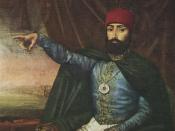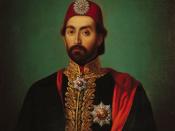In this essay the brief history of Ottoman Empire is given from 16th century to 1900s. Brief information about the leadership, military, economics and the concept of justice will explain.
Ottoman history from 1566 -1792 has been described as "The Decline of Faith and State." To Ottomans, " decline " meant dislocation of the traditional order; hence, " reforms " to check or reverse " decline " meant restoring the old order which had produced the Golden Age of Suleyman the Magnificent." At times decline was checked but only temporarily. Decline was not only slow, gradual, interrupted, lasting more than three centuries, but also it was relative only to its own Golden Age and to the remarkable progress of its Christian European neighbors.
17 sultans after Suleyman ( from1566 to 1789) were, with few exceptions, men of little ability, training, or experience, and some were incompetent, even mentally defective; their average rule of 13 years was less than half that of the first 10 sultans.
This was no accident! Mehmed III died in 1605 leaving two minor sons as the only direct male survivors. The elder, Ahmet I, spared the life of his brother, Mustafa, but kept him secluded in a special apartment in the harem of Topkapi Palace. The Sitva Torok treaty with Austria (1606) should have been a wake-up call for the Ottomans. It was a negotiated compromise rather than a grant of peace dictated by the sultan; in it, the Hapsburg monarch finally was recognized as the sultan's peer, as " Emperor" (Padishah rather than simply King of Vienna." Mustafa I's accession in 1617 marked the end of "succession by military contest and the practice of royal " fratricide," replaced by confinement of princes in the palace and succession by the eldest male of the imperial family.


